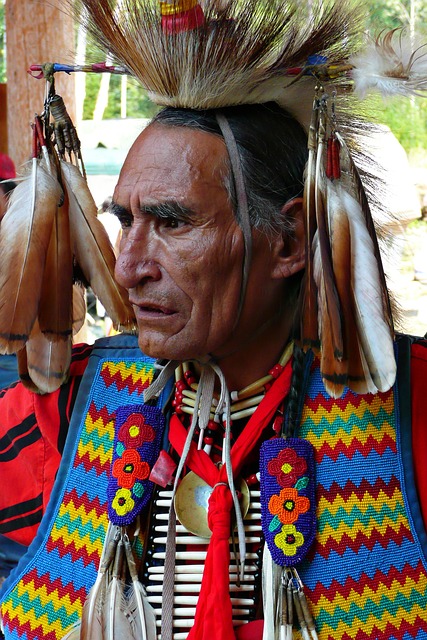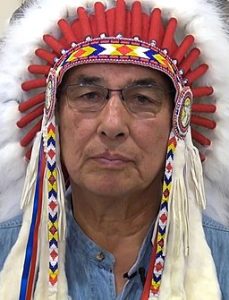Stepping Stone 7: Indigenous Sporting Competitions and Physical Culture Celebrations
by Dr. Rosalin Miles
Introduction

Both Indigenous physical culture celebrations and sporting competitions have contributed to the development of wholistic health and wellness with connections to the spiritual, emotional, and mental components that support physical success within cultural and sport practice.
Celebrations of Indigenous physical culture have been integral parts of community since time immemorial. In the past, physical culture celebrations were grounded in activities for sustenance or for sharing teachings that involve the body and movement. Physical culture related to sustenance, such as harvesting, hunting or fishing, are activities that are tied to celebrations for having a successful day, especially when food is shared with the family and the larger community.
Physical culture celebrations also include activities tied to community cultural and traditional teachings. First Nations Pow Wow Dancing, Métis Jigging, or Inuit drum dancing are a few examples of ways that physical culture is celebrated within Indigenous communities.
Indigenous sporting competitions have existed within and between communities for centuries. Historically, Indigenous sporting competitions within communities may have started as a way to practice skills needed for sustenance. However, prior to colonization, sports gradually evolved within Indigenous communities, and competitions were held between communities. Throughout colonization, Indigenous communities were exposed to mainstream societal sports within communities and at Indian Residential Schools.
Over the last thirty years, Indigenous communities have created a cultural resurgence, and as a result, there are currently international, national, and regional competitions, which will be discussed in this Stepping Stone.
Wholistic Learning Objectives
Stepping Stone 7 provides learners an opportunity to reflect on the past and present Indigenous physical culture celebrations, sporting competitions, and their ties to history.
Upon completion of Stepping Stone 7, learners should be able to:
*click through all 5 slides to read each of the wholistic learning objectives*
Warm-up Activity

While it may be tempting to jump ahead to focus on sports competition and the successes of Indigenous people within mainstream games, it is valuable to first consider the family-centered approach which encompasses physical culture celebrations and the ties to health and wellness. When building on historical, cultural and traditional practices, it is important to reflect and acknowledge ties to the land, sustenance, and any community’s physical culture.

Celebrations are a time for people to gather to express gratitude and recognize strengths and successes of a community or family. Celebrations are events that take place in settings suitable for traditional practices, whether they are indoor or outdoor cultural spaces.
Before you continue on your journey through this Stepping Stone take a moment to:
- Identify a celebration that is important to you, your family, your culture, and your community.
- Think about the characteristics that make this celebration special.
- What is the timeline of the celebration? Is it a yearly celebration? A monthly celebration? A weekly celebration?
- How do you feel when you are able to engage in this celebration?
Celebrations and Events
Celebrations of Indigenous physical culture have long been a part of bringing people together, both within and between communities. Celebrations may have been created for a variety of reasons, such as for the change of seasons, successes in hunting or fishing, or to bring families together. During the great Artic North times, people may have spent their time preparing for the great hunt or staying warm in small spaces by drumming and throat singing.
Activity 1
Watch: The Ulukhaktok Western Drummers and Dancers – Inuvialuit HD Drum Dance Series (8:20)
- How does Indigenous physical culture celebration of drum dancing tie to the land?
Artic Winter Games
Since colonization, one of the first northern games that included Indigenous competitions and athletes was the Arctic Winter Games. The first Arctic Winter games were held in 1967 in Quebec City (Arctic Winter Games International Committee, 2004).
Activity 2
Watch: The First Arctic Winter Games | Canadian Geographic (24:20)
Then read:
- How are the Arctic games tied to physical culture, and is the Olympic model the best fit for highlighting physical culture?
Activity 3
Read: Arctic Winter Games 2023 open with a rockin’ outdoor party at –17 C
- How are all games tied to politics?
North American Indigenous Games (NAIG)
The first North American Indigenous Games (NAIG) was held in 1990, in Edmonton, Alberta. Since 1990, there have been 11 NAIG events, and the 12th NAIG games will be held in 2023. In 2023 NAIG is expecting over 5,000 athletes who represent more than 700 Nations to participate.
Take a moment to look at the NAIG 2023 Medal Designs:
There are 16 mainstream sports represented at NAIG, and some sports like lacrosse, canoe/kayak or 3-D archery have ties to traditional games. The represented sports include:
-

Image Source 3-D Archery
- Athletics
- Badminton
- Baseball
- Basketball
- Beach Volleyball
- Canoe
- Kayak
- Golf
- Lacrosse
- Rifle shooting
- Soccer
- Softball
- Swimming
- Volleyball
- Wrestling
Along with the NAIG event, there are cultural activities to bring Nations together from across Turtle Island. There has been representation at games from 55 regions on Turtle Island. The NAIG games highlight the ties of sports to self-determination and cultural activities.
Activity 4
Watch: NAIG. North American Indigenous Games. Past, Present and Future (6:18)
- What are the benefits of the North American Indigenous Games for youth?
Dr. Wilton Littlechild is from the community previously known as Hobbema, which is just north of Edmonton, Alberta. Dr. Littlechild dreamt of a large-scale Indigenous competition event, and had the original vision of an International Indigenous games. Dr. Littlechild shared this aspiration in 1977 at the “Annual Assembly of the World Council of Indigenous Peoples,” where he “presented the motion to host International Indigenous games. It was unanimously passed” (NAIG, 2023).
In 2005, Sport Canada’s Policy on Aboriginal Peoples’ Participation in Sport was developed by Heritage Canada. In general, the vision of the new policy was to be inclusive of Aboriginal (Indigenous) peoples and reduce barriers, so that there may be socio-economic change (Canada Heritage, 2005). The policy statements include references to the NAIG and Arctic Games. These policies were meant to enhance participation, excellence, capacity, and interactions.
When reflecting on the United Nations Declaration on the Rights of Indigenous Peoples (UNDRIP) (Assembly, 2007), Article 31 states “Indigenous peoples have the right to maintain, control, protect and develop their … sports and traditional games and visual and performing arts.” Following UNDRIP, Canada reflected on the rights of Indigenous people, and created the Truth and Reconciliation Canada Commission of Canada, naming Dr. Wilton Littlechild the commissioner. Being the past commissioner of TRC, Dr. Littlechild was also part of the movement to create the TRC Calls to Action which includes the 5 calls to action that support athletes, sports, and games.
World Indigenous Nations Games (WIN)
The World Indigenous Nations (WIN) Games officially came to fruition in 2015 in Brazil, and in 2017 in Alberta, Canada with Dr. Littlechild’s leadership. The 2017 WIN Games was hosted by Dr. Littlechild’s Maskwacîs community, and over 55 countries competed. This was the forty-year anniversary of when the dream was shared with the annual assembly of the world council, highlighting Indigenous communities coming together in sports competitions.
In reflection, why are there Indigenous Sporting Games? Is it to be inclusive of Indigenous culture, and/or is it to create culturally safe spaces for Indigenous athletes, coaches, officials, and participants?
Wellness Break
Take a break and step to Powwow fitness:
Watch: POWWOW SWEAT: Traditional (4:42)
Or find some music that you love to dance and play two songs and dance like no one is watching!
A Deeper Journey
We encourage you to explore these additional resources for a deeper journey related to this Stepping Stone.
*click on the headings below to reveal more resources*
Stepping Stone 7 Summary
 Indigenous people have been practicing physical cultural celebrations as a part of traditional ways of being since time immemorial. There are a variety of traditional and mainstream sporting competitions by Indigenous peoples that include the Arctic Games, North American Indigenous Games, World Indigenous Nations Games, and Voyageur Games. The ties to Indigenous physical culture and sporting competitions to self-determination were highlighted in the Sport Canada’s Policy on Aboriginal Peoples’ Participation in Sport, UNDRIP, and the TRC Calls to Action. This Stepping Stone was a brief summary of some of the activities for the revitalization of Indigenous physical culture celebrations and sporting competitions. Stepping Stone 8 will review some of the successful athletes in sports and physical activity.
Indigenous people have been practicing physical cultural celebrations as a part of traditional ways of being since time immemorial. There are a variety of traditional and mainstream sporting competitions by Indigenous peoples that include the Arctic Games, North American Indigenous Games, World Indigenous Nations Games, and Voyageur Games. The ties to Indigenous physical culture and sporting competitions to self-determination were highlighted in the Sport Canada’s Policy on Aboriginal Peoples’ Participation in Sport, UNDRIP, and the TRC Calls to Action. This Stepping Stone was a brief summary of some of the activities for the revitalization of Indigenous physical culture celebrations and sporting competitions. Stepping Stone 8 will review some of the successful athletes in sports and physical activity.
Cool-down Activity

Before beginning this Stepping Stone, you were asked to consider celebrations that are important to you, your family, and/or your community. After learning about a variety of Indigenous games and competitions, consider the following reflection questions related to one of these events- the Arctic Games.


